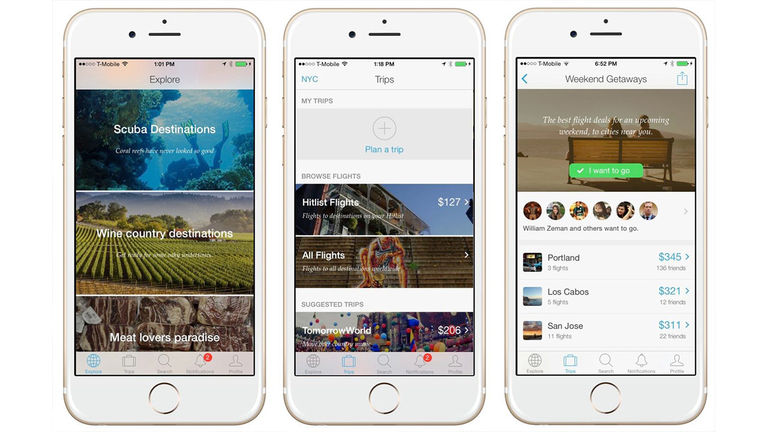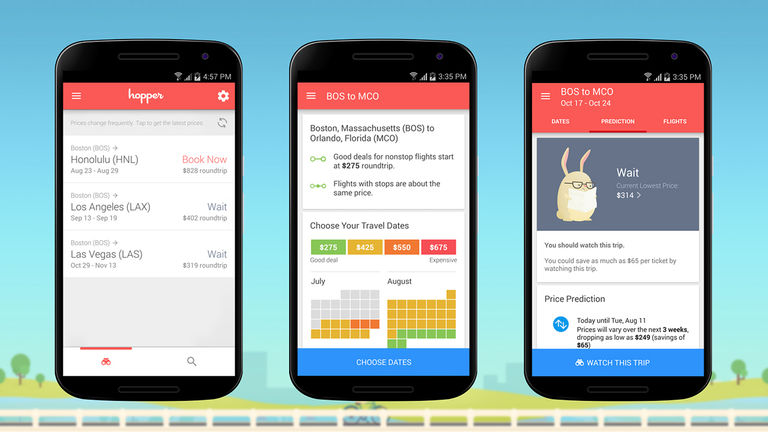With dozens of new travel apps and platforms coming out year after year, some travel advisors often feel like the tech world is trying to edge them out. Rather than resist technology trends, agents should consider using these innovations — both consumer and B2B — to their advantage.
“As travel professionals, it is important to meet our clients where they are and provide the best tools and services to create exceptional experiences,” said Washington D.C.- based Leslie Canter Swanson of Leslie Swanson Travel, an affiliate of Departure Lounge. “Innovative tools assist travel professionals and our clients at every stage of the process, from ideation and discovery to app-based itineraries that can be edited in real-time and provide up-to-the-minute guides to travelers on the go.”
New travel technology doesn’t just increase day-to-day productivity — it also streamlines workflows so that agents can focus on what they do best: making sales and delivering high-touch customer service.
“New travel technology augments, automates and facilitates our marketing and client retention efforts,” said Daria Westerfield, owner of Houston-based West University Travel, a Virtuoso member. “Staying on the cutting edge also gives us differentiation from the competition and strikes a chord, resulting in greater client referrals and satisfaction.”
So, which tools should your agency integrate into its daily workflow, and when? Although there are too many travel platforms to list, the following 10 tools represent some of the most compelling options in today’s ever-changing marketplace.
Axus
Use for: Managing Itineraries
One of several itinerary-management platforms with a consumer-facing app and an interface built specifically for the travel trade, Axus allows travel planners to create and share attractive itineraries with dynamic content. Each itinerary promotes the travel agency’s logo front and center, and clients can message with advisors in the app as well as get driving directions and flight notifications while in the destination. Note: Axus is owned by Northstar Travel Group (NTG), parent company of TravelAge West, and integrates helpful travel guides from Travel42, also under the NTG umbrella.
Cost: Standard pricing is $35 per month or $319 per year. Further discounted pricing is available for certain consortia, and agents can give it a whirl for free for up to 14 days.
www.axustravelapp.com
Hitlist
Use for: Finding the Ideal Time to Travel
 Clients with flexible travel dates can save on airfare with Hitlist.
Clients with flexible travel dates can save on airfare with Hitlist.
Credit: 2018 HitlistIf a client has a destination in mind and flexible travel dates, consider using Hitlist as a search tool — the app claims that it scans millions of fares to help users know the optimal time to travel. When searching for the best airfares to Paris, the app found dozens of options for under $500 per person (the cheapest was $359) for travel periods within the next four months.
While some itineraries featured a single carrier, many bundled low-cost airlines with traditional carriers for greater savings. With deep deals on airfare, travel planners can add on a flat booking fee and still offer a more affordable itinerary than clients are likely to find for themselves.
Cost: Free. The premium service is $4.99 per month and includes members-only fares and advanced filtering.
Hopper
Use for: Predicting Flight Prices
If you utilize Hopper correctly, clients might think you have a crystal ball at your desk. The app combines artificial intelligence (AI) and big data to predict airfares and accommodations up to a year in advance — with 95 percent accuracy, according to Hopper. Ideal for clients who want to go to a specific destination and get the best deal on airfare, the app tells agents when they should book the flight and when they should wait.
 Hopper searches for the cheapest airfare and tells agents when to book.
Hopper searches for the cheapest airfare and tells agents when to book.
Credit: 2018 HopperFor example, when doing a search for travel from Los Angeles to Austin, Texas, during the Christmas holidays, the app may advise to “wait for a better price,” saving as much as $45 per ticket by using the Watch This Trip feature, which sends notifications if prices fluctuate. It also points out the booking window during which prices are likely to climb — and by how much. Earlier this month, Hopper received $100 million in funding for a large expansion led by Omers Ventures.
Cost: Free.
www.hopper.com
Hotels.com
Use for: Searching for Aggregated Hotel Content
Hotels.com is an OTA that offers access to hundreds of thousands of accommodations worldwide, with booking capabilities for both independent and major hotel brands. A Travel Agent Affiliate Program, available through parent company Expedia Group, features an incentive plan, commission, weekly promotions and the services of a customer care team.
Agents who would rather book directly with the hotel or through a preferred partner can still reap the benefits of Hotels.com’s search functionality and aggregated content. For example, it can sometimes prove tedious to search on individual hotel websites for information about the number of guestrooms and room types available, amenities on offer, parking fees, hotel transfer availability and contact information. With just a couple of clicks on Hotels.com, all that information and more — including estimated walking time to nearby attractions — is at your fingertips.
Cost: Free.
www.hotels.com
Kayak
Use for: Calculating Baggage Fees
For years, Kayak has not only been a resource for finding cheap flights, but also a platform that can help agents find the best flight to match a client’s needs.
This fall, the OTA unveiled a new in-app feature that harnesses augmented reality (AR) to help travelers determine whether their bags will meet airlines’ strict carryon requirements. Clients can take a picture of their carryons, and the app will do the math to see if the bags pass the test or will need to be checked. Passing along this cool tool to clients can demonstrate that you are truly an expert who stays on top of trends, provides value in numerous ways and cares about clients even after they’ve paid for their trip in full.
Furthermore, advisors can now enable the app’s Fee Assistant to include appropriate baggage fees to their search across multiple airlines.
Cost: Free.
www.kayak.com
Staying on the cutting edge gives us differentiation from the competition and strikes a chord, resulting in greater client referrals and satisfaction.
SeatGuru
Use for: Snagging the Perfect Airline Seat
SeatGuru, a TripAdvisor company, was created to help travelers select the most ideal seats and in-flight amenities for a trip. Advisors will find the website and app handy when searching for unique requests, such as the desire to travel with pets, sit in an exit row or have a certain amount of seat pitch to stretch their legs.
Booking business travel? No problem. Use comparison charts to find out which airlines offer charging outlets, Wi-Fi access and a comfortable enough seat pitch for clients to break out their laptops.
Cost: Free.
www.seatguru.com
Travefy
Use for: Managing Itineraries
With Travefy, advisors save time by quickly designing, producing and updating client proposals and itineraries in an easy-to-use platform. The itinerary-management tool acquired the assets of TripScope and offers agents co-branding, real-time messaging with clients, flight updates and the capabilities of importing existing reservations via email forwarding and an integration with ClientBase.
Cost: The Plus Package is $39 per user, per month, or $31 per user, per month, when billed annually. A 10-day free trial is available.
www.travefy.com
TravelContact
Use for: Summarizing Client and Trip Data
As a customer relationship management (CRM) tool, TravelContact’s aim is to humanize technology and enhance the performance and customer service of travel agencies and advisors. Some of the platform’s core functionalities include a detailed client database that keeps track of trip history and preferences; automated messages and reminders for clients; comprehensive reports for your agency as well as for individual advisors; and a supplier database that the entire company can access and edit.
Through its partnership with itinerary platform Umapped (see more on that company below), TravelContact enables advisors to keep track of the brass tacks of each trip, including costs, commission, payments and invoices. Best of all, the multitool platform was created by a fourth-generation travel advisor who understands the needs and functionalities of modern travel agencies.
“Still in beta, TravelContact is a one-stop shop CRM solution for the modern travel advisor,” said Swanson of Leslie Swanson Travel. “Easy to use and thoughtfully designed, with capabilities from building itineraries and logging bookings to a powerful sales dashboard and reporting functionality, TravelContact makes my life easier and helps me understand my business better and anticipate the interests of my clients before they know themselves.”
Cost: $35 per month, per user, for up to 10 travel professionals. A 30-day free trial is available.
Smart technology goes hand in hand with the productivity, growth and the education of the travel industry.
Use for: Managing Itineraries
Similar to Axus and Travefy, Umapped works to consolidate bookings, curated content and real-time location data into a social and mobile tool for travelers. The itinerary-management platform recently announced a partnership with Afar, which allows agents to serve clients Afar-curated content and recommendations sourced from Afar.com.
“We religiously use the Umapped itinerary builder daily; others use Axus,” said Westerfield of West University Travel. “In my view, these tools are essential to brainstorm, formalize and organize our clients’ travel plans, and they eliminate scheduling errors and overlap. Best of all, clients love it. They especially enjoy keeping in touch with us while on the trip through an instant-messaging feature.”
Cost: $25 per user, per month, or $22.50 per month, when billed annually. Preferred partners receive a discount depending on their consortium affiliation.
www.umapped.com
Wherefor
Use for: Hunting for the Perfect Destination
Just because a website or app was developed for the end consumer doesn’t mean that travel professionals can’t benefit from it, too. Case in point: Wherefor is an OTA that targets travelers who have a specific budget and travel period in mind but haven’t yet decided on a destination. Agents enter their clients’ hotel and flight budget, number of travelers, dates and departure city, and Wherefor generates a map that displays all the locations they could visit within their budget. From there, travel planners can select various cities around the globe to see the cheapest flight (including taxes and fees) and best hotel match within the given search filters. Alternatively, advanced search options allow advisors to select a specific arrival city or airport.
When would you use this tool? Well, when Joshua Smith, co-founder and director of strategic development for career development and networking organization Millennials in Travel, was a travel advisor, he used the website exclusively for research — never as a means of booking.
“If a client were to say they wanted to go away for five days and had a budget of X, I’d use Wherefor simply as a means of searching — something the current GDSs can’t do,” Smith said. “I provided clients with options based on airfare and then added my personal recommendations on hotels and activities.”
Cost: Free.
wherefor.com
Indeed, technology doesn’t devalue the value the role of today’s travel advisor. If anything, new digital tools can embolden travel professionals and augment their businesses in numerous, creative ways.
“I believe that smart technology goes hand in hand with the productivity, growth and the education of the travel industry,” Swanson said. “At my agency, we are constantly testing and trying new technologies to improve and enhance our service and expertise. As such, I feel lucky to have some of the most innovative technologies at my fingertips for use across all aspects of my business.”